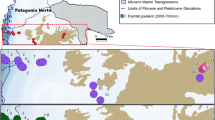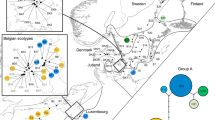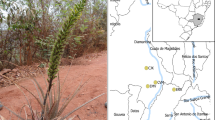Abstract
In Belgium, at the western border of its continental distribution range, the perennial herb S. nutans has evolved two parapatric ecotypes (calcicolous or silicicolous), which show contrasted allozyme, morphological and adaptive patterns, and isolating reproductive barriers. We examined allozyme variation in 21 populations close to Belgium (from France and Luxemburg) in relation to their peripheral or central geographical position, and investigated their genetic relationships with the Belgian ecotypes. Both peripheral and central populations showed high genetic variation. They were differentiated from each other, but not in relation to the substrate (calcareous or siliceous). The peripheral and central populations were related to the Belgian silicicolous and calcicolous ecotype, respectively. This suggests an ancient differentiation and different past histories for the Belgian ecotypes, and parapatric speciation processes. This study exemplifies the high evolutionary potential of populations at range peripheries and the need for considering them in conservation strategies.
Similar content being viewed by others
Author information
Authors and Affiliations
Corresponding author
Rights and permissions
About this article
Cite this article
Van Rossum, F., Vekemans, X., Gratia, E. et al. A comparative study of allozyme variation of peripheral and central populations of Silene nutans L. (Caryophyllaceae) from Western Europe: implications for conservation. Plant Syst. Evol. 242, 49–61 (2003). https://doi.org/10.1007/s00606-003-0049-3
Received:
Published:
Issue Date:
DOI: https://doi.org/10.1007/s00606-003-0049-3




